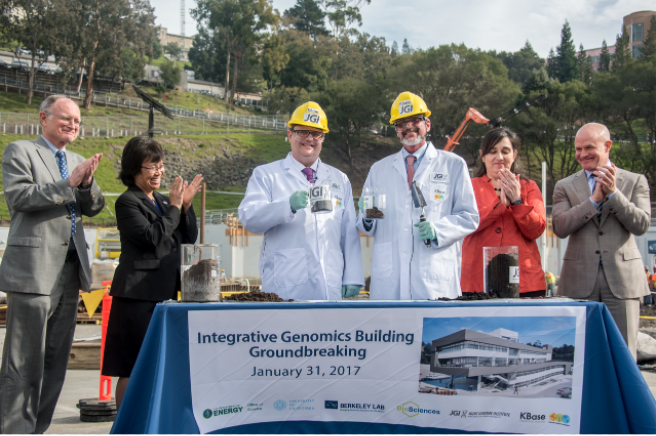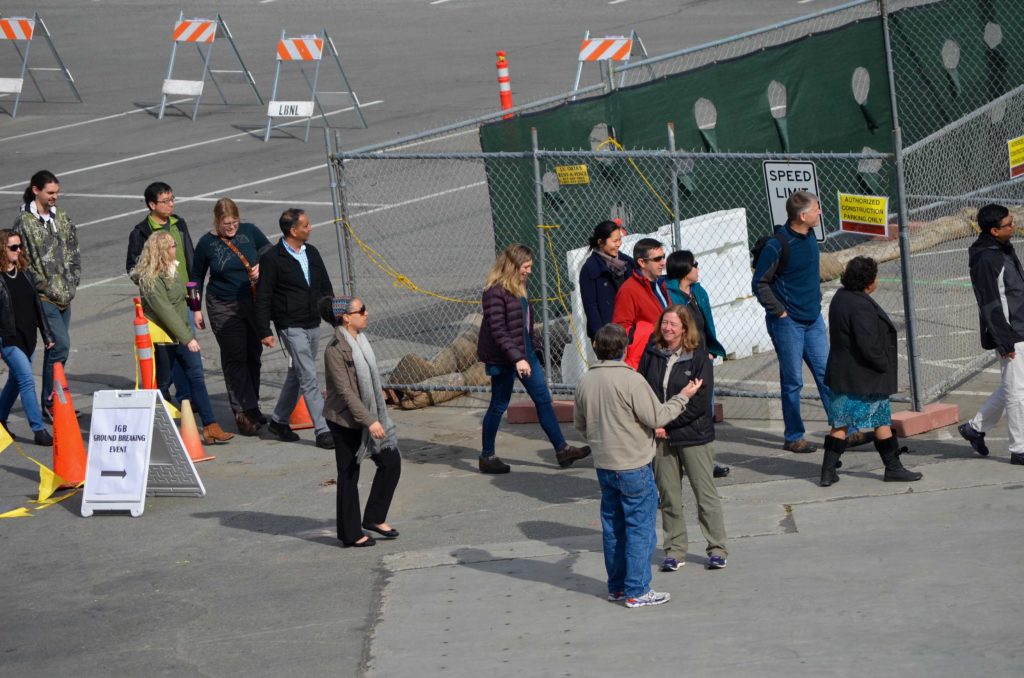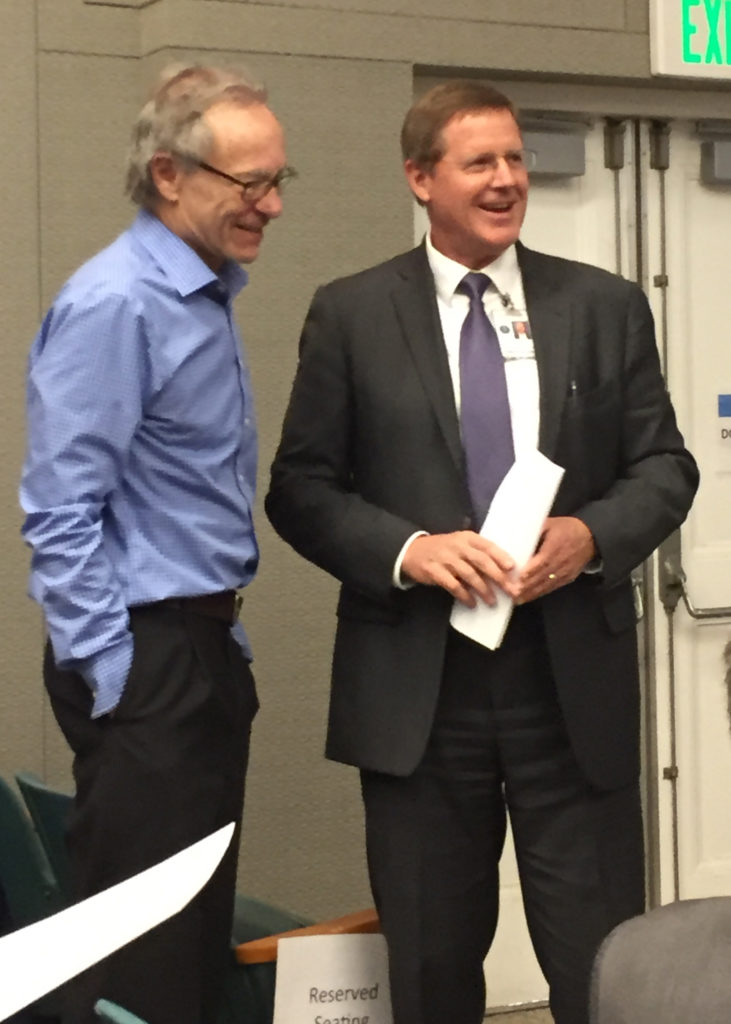
Incoming JGI Director Nigel Mouncey (center, left) and KBase principal Investigator Adam Arkin click soil-filled beakers at the IGB groundbreaking. (Image by Marilyn Chung, Berkeley Lab)
On January 31 at Berkeley Lab, a groundbreaking ceremony was held for the Integrative Genomics Building (IGB) that will be the home of DOE Joint Genome Institute (JGI) and DOE Systems Knowledgebase (KBase) in 2019. Flanked by dignitaries representing the Berkeley Lab, the Department of Energy Office of Science, and the University of California, incoming DOE JGI Director Nigel Mouncey and KBase Principal Investigator Adam Arkin clinked beakers of soil in a toast to their future colocation.
“This is just the start of what I think is a really exciting time for the Biosciences,” said Sharlene Weatherwax, Associate Director of Science for Biological and Environmental Research (BER) at DOE Office of Science.

Getting ready for the groundbreaking ceremony. (Image by Molly Dick)
DOE JGI staff came to Berkeley Lab from Walnut Creek for the occasion, as did the KBase staff from Emeryville. A short program at the Building 50 auditorium and a reception followed introductory talks at the IGB site, previously the home of the Bevatron particle accelerator. Standing in front of the heavy machinery, Director Mike Witherell’s introduction linked Ernest Lawrence’s development of team science to the creation of the DOE JGI, which unified the genomic resources and expertise at three national labs, and to the current steady growth of biosciences at Berkeley Lab.

JGI staff arriving from Walnut Creek for the groundbreaking ceremony. (Image by Molly Dick)
In her follow-up remarks, Associate Director Weatherwax tracked the JGI’s transition from working on individual genomes to the analysis of complex community systems, and noted the BER’s recognition of systems biology being intimately connected to environment. She added that a large part of achieving the DOE mission is in disseminating these data to the JGI and KBase users. “KBase embodies the spirit of team science and sharing that is the BER spirit,” she said.
Jay Keasling, Associate Laboratory Director for Berkeley Lab’s Biosciences Area, hosted a short program, which featured remarks by Berkeley Mayor Jesse Arreguin, and prerecorded greetings from US Senator Dianne Feinstein and US Representative Barbara Lee. Pier Oddone, former Berkeley Lab Deputy Director, and former Fermilab Director, took the opportunity to recall the early days of the DOE’s involvement in the Human Genome Project that led to the creation of the DOE JGI, and the directors leading up to Mouncey. Jennifer Pett-Ridge, a senior staff scientist at Lawrence Livermore Laboratory, spoke as a researcher who has benefited from working with both the DOE JGI and KBase to conduct soil research.

JGI Director Emeritus Eddy Rubin (left) in conversation with Berkeley Lab COO Glenn Kubiak (right) just before the IGB program in the Bldg 50 Auditorium.
“This is really is the first step for a truly exciting vision,” echoed Kim Budil, Vice President for National Laboratories at the University of California Office of the President. She spoke on behalf of the University of California, which has managed Berkeley Lab since 1943. “It speaks to DOE’s unending commitment to basic research in energy & environment.”
Click here to read the Berkeley Lab news release about the groundbreaking. Click here for the Biosciences Area article on the event.